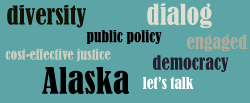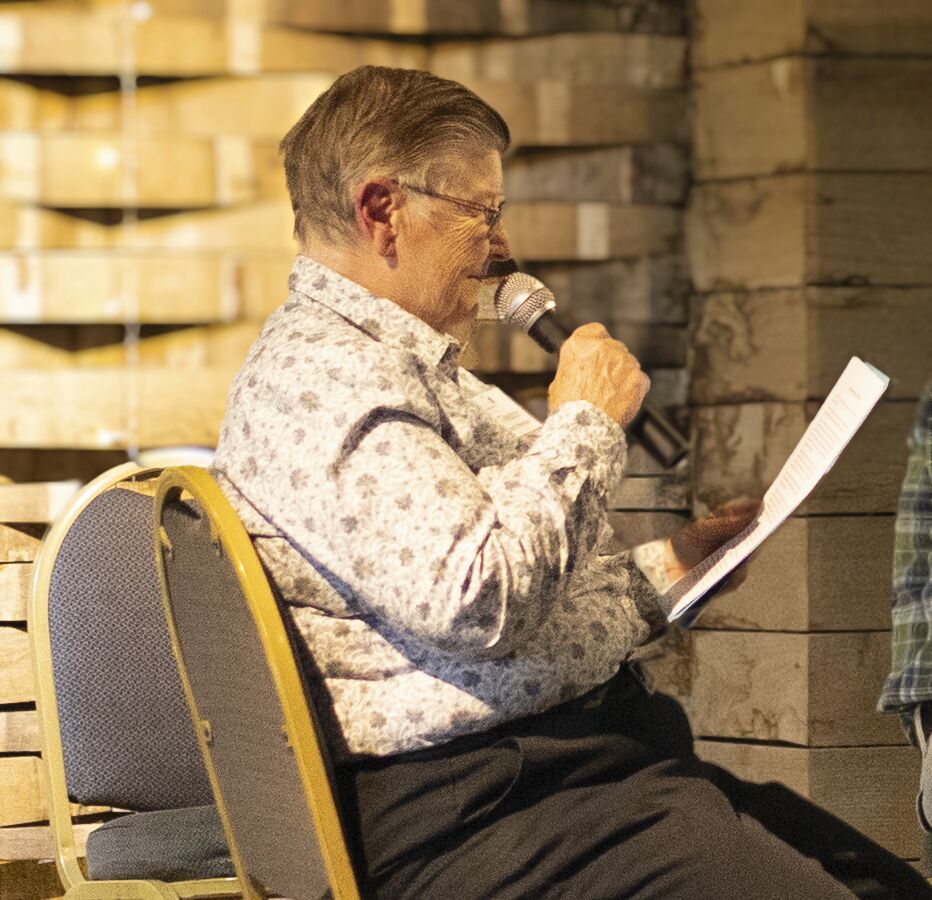
Stephanie M. Nichols
July 2023
I began these reflections in mid-December 2022, about a month after I returned to the United States from
my Marshall Memorial Fellowship in Europe. I have been thinking since then that I will have an epiphany
and everything I am thinking and wanting to say will perfectly and coherently emerge and write itself. So far, that hasn’t happened, but I want to start somewhere so here I am.
After an arduous and lengthy application process, back in 2019 I had the good fortune of being selected by the German Marshall Fund as one of 30 Americans for a Marshall Memorial Fellowship. The fellowship is born out of the Marshall Plan that was implemented after WWII. It is a leadership program for a small group of Europeans and Americans that focuses on building and strengthening transatlantic partnerships.
I was originally scheduled to travel to Europe in March 2020. On that March 3rd morning, nearly 10 days
before I was to depart my home in Anchorage, Alaska, and with my bags already packed, the fellowship was postponed indefinitely. While the borders in Europe closed, the world as we knew it also shut down around us. Finally, after over three years and starting this past October, I embarked on one of the most
transformative experiences of my life at a particularly critical time in our history. Europe in 2022 will reside in the history books as a time like nothing we have seen since perhaps 1939.
After briefings in Washington DC, the American fellows flew across the Atlantic and began our meetings in Brussels, Belgium, at NATO Headquarters, a place that was created in the aftermath of WWII for the
purpose of securing peace in Europe. Its purpose also intended to guard its members’ freedom due to the
impending threat of the then-Soviet Union.
After we passed through NATO security, I was immediately struck by the eerie resemblance of today. Europe has a war on its doorstep as Ukraine fights not only for itself and its own sovereign existence, but also for all of us in defense of textbook democracy. I left realizing not only the powerful role of the United States in NATO but also that NATO is experiencing its most defining test and preparations since its inception.
From Brussels, we traveled to Hamburg, Germany, where the people are rightfully proud of their stunning
and diverse city. On a whirlwind tour with a retired German school teacher as our guide, I witnessed the
beautiful modern parts of Hamburg that were long-ago rebuilt after WWII. I was struck by Hamburg’s
punctuality and no-nonsense no-frills efficiency that covers a warmth and care that often goes unnoticed. It’s no wonder I felt at home there as a large part of my family immigrated to the United States from small
farming communities just outside of Hamburg.
After Germany I spent a week in Rome where we met with various dignitaries while Italy’s new prime
minister was implementing new and unprecedented laws almost daily. Experts across the country, including many with whom we met, were reacting to the implications of these laws and trying to predict what would come next. Since I was in Rome and Notre Dame has a campus there, I had to pay it a visit. I was entertained to learn that Notre Dame insisted on having its own chapel even though there are a plethora of thousand year old churches on every nearby street. Between gelato, wine, and pasta, Rome at night has to be one of the most magical places on earth. Around each corner is another beautifully lit scene that punctuates their postcards.
From Rome, I traveled to Belgrade, Serbia, a country that has chosen not to repair the areas that were
bombed by NATO during the 1990’s because, in their own words, they want to remember those hard times. My first view of the city saw some of the scars from those bombings as our plane entered Belgrade.
Throughout my stay there, I never once heard any recognition for why NATO dropped its bombs in 1999,
and Tito remains their unquestionable hero.
Belgrade has some of the worst air quality of any city in the world and many days it surpasses Shanghai. The permanent cloud of thick pollution that covers the city soon became stuck in our throats and aptly
personified my time there.
My stay in Serbia was oftentimes unsettling, but it is certainly where I learned the most. I got a small glimpse of what it might feel like to live in a country void of true democracy and to reflect upon what freedom really means. At the same time and in what felt like an entire world away, and under a November full moon, the United States midterm elections were taking place. I saw “F%$K the USA” and Russian “Z’s” spraypainted on the side of buildings, Hitler’s Mein Kampf displayed at the bookstore near our hotel, and Putin’s face silkscreened on t-shirts for sale in central Belgrade. It may seem that Serbia’s official position of “neutral” regarding Russia’s invasion of Ukraine is not only a cop-out but a misrepresentation at best.
As we drove to the Belgrade airport to leave the country, I looked up at the exact right moment to catch the words “Remember Kosovo is Serbia” painted in English on an overpass – a clear reminder of the continued unrest and disagreement with the West in recognizing Kosovo’s independence as its own country. This unrest significantly escalated during the short time we were in Serbia, and we heard frequent predictions that another war is likely on the horizon.
The fellowship ended in Paris where we spent several days exploring the city and visiting the U.S. Embassy. I was struck by the fact that a new café exists every 20 feet, and I ironically had some of the best Thai food of my life in Paris. I also made note of the fact nobody got coffee drinks to-go. While this wasn’t unique to France since Italy was similar in this regard, it didn’t occur to me until Paris that I had not gotten to-go coffee since I left the United States. I’m sure it goes without saying that the art of actually sitting and enjoying conversations with a warm drink is something Europeans due on another level than Americans.
After an incredible month crisscrossing Europe, I began the epically long journey back across the globe to
Alaska where I had ample time to reflect on the many briefings and discussions over the past month. In every city and country we visited, the issues that were consistently top of mind were: Ukraine, climate change, and China – in that order.
Upon returning home I began tutoring a Ukrainian still living in Kyiv to assist him in furthering his English
skills. During one of our sessions, I apologized for the loud jet noise outside my house as the United States military conducted their routine Saturday morning practice flights.
He asked, “Are those United States Air Force fighter jets?”
When I said they were, he unequivocally shared, “If I could hear U.S. fighter jets outside my window, I would sleep really well at night.”
Between hearing his perspective and the many ways I witnessed the United States’ profound place in the
world throughout my time in Europe, I will never hear those fighter jets the same way again nor will I
apologize for them.
The wisdom of the Marshall Plan whose legacy continues to be carried out through the German Marshall
Fund and this fellowship are more crucial now than ever as so much in our world hangs in the balance. We are at a tipping point in history, and we each have a responsibility to forge a new and better future for our next generations.
I returned home from this fellowship loving my country, despite our persistent shortcomings, not only more than I thought possible, but even more than I thought necessary.
I close with giving my full respect to the people of Ukraine and all those who fight to defend freedom and
democracy around the world. To quote Willie Nelson in his song, Living in the Promiseland, “The prayer of
every [person] is to know how freedom feels.” No matter who we are, no matter where we live, those words ring true for each and every one of us.


